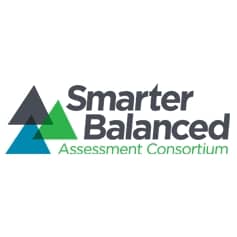Getting Ready for Online Assessment

The Smarter Balanced Assessment Consortium (SBAC) released about 50 representative items and tasks today in an effort to showcase the variety of items being developed and to assist teachers to begin to plan for the shifts in instruction required by the new demands of assessments aligned to the Common Core State Standards.
Background. The big 2009 stimulus bill included about $4 billion for the Race to the Top incentive grant program which included an assessment grant program that awarded $330 million split between to state consortia, Partnership for Assessment of Readiness for College and Careers (PARCC) and the SMARTER Balanced Assessment Consortium (SBAC).
The two consortia are contracting with vendors to build next gen tests of Common Core skills. The online tests will be operational in 2014-15 and will make extensive use of online scoring to keep the costs down. (My team been running Hewlett Foundation-funded prizes to help improve the quality of online assessment; see the exciting story of the winners of the $100k prize last week.)
There are 25 states in the Smarter Balanced consortium representing about 40 percent kids (and there are six states with no consortium affiliation: AL, TX, VA, MN, NE, UT). Washington State is the fiscal agent and WestEd is project manager.
Sample Items & Tasks. The simulated platform unveiled today gives teachers a sense of what they can expect on the new tests. Item types will include
- Selected-response (yes, there will still be multiple choice items)
- Constructed response: both short and long
- Tech-enhanced items: animations and manipulations
- Performance tasks: scenario-based application of skill to more complex problems that may take 1-2 hours spanning multiple testing sessions
The items are viewable by grade band (3-5, 6-8, high school), content claim, type, and themes. The 50 items are split between math and English Language Arts and should help teachers begin planning for the shift in instruction that are expected with the Common Core. The sample items don’t have the full range of accessibility and accommodations that will be featured in the 2014-15 tests.
Barb Kapinus, the SBAC ELA lead, said the items on the sample site provide a glimpse into the importance of text complexity. Students will be asked to read complicated text, find and use evidence, and highlight it in written responses.
Shelbi Cole, math lead, said items will include graphical manipulation (e.g., empty the water from this container to fill the other container) that for many students should make the questions more clear and for some reduce the language barrier.
The items released today are not intended to be a guide on the actual mix of item types (i.e., proportion of constructed response) on the first round of tests–that’s a complicated issue subject to additional deliberation.
The performance tasks are the most interesting revelation of the day. In one example, students are given a list of background links on nuclear power and asked to assume the role of congressional chief of staff. The are required to conduct research, develop a list of pros and cons, and develop a press release in support of a position. The rubric scored task considers purpose, focus, organization as well as evidence and elaboration
What’s Next? This summer SBAC released training modules with background on item development and Evidence-Centered Design (John Behrens suggested that using ECD there’s “No excuse for sucky items”).
Smarter Balanced Executive Director Dr. Joe Willhoft said that in the next few weeks the consortium will release long awaited tech specs. But (here’s the where the opinion piece starts) it will be important to remember that SBAC and PARCC will bend over backwards to accommodate less than ideal testing conditions with limited and old technology.
For example, the big behind the scenes controversy right now is that more than half of the computers in U.S. schools run Windows XP–the operating system that Microsoft introduced in 2001. Some folks are suggesting that the consortia should accommodate XP for test deployment in the spring of 2015–thirty months from now. Come on people, IT’S TIME FOR AN UPGRADE! Some of these arguments are just not worth having.
Others will argue that with a long testing window (12 weeks before the end of school) and quadruple shifting kids through a computer lab that computer ratios of 1:4 will suffice for testing. That may be logistically conceivable but it’s a bad idea. Schools should try to make testing environments as close to learning environments as possible. And it’s time for the shift to digital.
It’s also time for the consortia to begin thinking about versions. The 2015 tests are just the beginning of what should be an age of innovation in formative and summative assessment. The items released today are a step forward but touch computing and simulation there is a world of possibility when it comes to innovative items and tasks. As access and computing power increase, the consortia should introduce new testing versions at least every other year.
Online assessment creates the opportunity for better and cheaper state tests. The 23 months timeline before the 2014-15 school year provides the perfect timeline to phase in better access to technology, to shift to digital instructional materials, to incorporate powerful digital tools and efficient blended school models.
Last month Digital Learning Now (DLN), a policy roadmap for the future of learning, released a paper called Funding the Shift to Digital Learning: Three Strategies for Funding Sustainable High-Access Environments. Every school can afford the shift, it just takes leadership over a couple years of transition. DLN released another paper today called Data Backpacks: Portable Records & Learner Profiles that illustrates how improved access and learner profiles will unlock the power of personalization.
In the meantime, SBAC marches on. The pilot test of first 10,000 items and performance tasks will take place in February to May 2013. If your school is not part of that that trial, there’s are lots of Common Core aligned alternatives that will give you a preview of things to come. Download the Common Core app from MasteryConnect, try the diagnostic instruction from i-Ready, check out lessons from LearnZillion.
It’s time to make the shift to digital. Online state assessments are a great pivot point. Don’t try to get by with the least. Make the most of the opportunity.
The SBAC release is below. You can find the sample items and tasks here:
http://www.smarterbalanced.org/sample-items-and-performance-tasks/
###
Smarter Balanced Releases Sample Assessment Items and Performance Tasks
Mathematics and English language arts/literacy questions illustrate rigor and complexity of next-generation assessments
OLYMPIA, Wash.— The Smarter Balanced Assessment Consortium (Smarter Balanced) released a set of sample assessment items and performance tasks online today. Developed in collaboration with educators and content experts, the sample items and tasks are meant to help teachers, administrators, and policymakers better understand the Common Core State Standards and prepare for the implementation of the Smarter Balanced assessments.
“The Smarter Balanced sample items and performance tasks provide an advance look at the types of questions students will encounter when the assessments are implemented in the 2014-15 school year,” said Joe Willhoft, Ph.D., executive director of Smarter Balanced. “Educators can use them to begin planning the shifts in instruction that will be required to help students meet the demands of the new assessments.”
The samples include nearly 50 assessment items and performance tasks, including examples of innovative, technology-enhanced items that take advantage of computer-based administration to assess a deeper understanding of content and skills than would otherwise be possible with traditional item types. In addition, sample performance tasks showcase the extended classroom- based activities students will experience as part of the Smarter Balanced assessment system.
“Performance tasks ask students to research and analyze information, weigh evidence, and solve problems relevant to the real world, allowing students to demonstrate their knowledge and skills in an authentic way,” said Linda Darling-Hammond, professor of education at Stanford University and senior research advisor for Smarter Balanced. “The Smarter Balanced assessment system uses performance tasks to measure skills valued by higher education and the workplace—critical thinking, problem solving, and communication—that are not adequately assessed by most statewide assessments today.”
The sample items and performance tasks include several features to help teachers, students, and parents prepare for the new assessments. Each item has detailed information about the standards and assessment targets being measured. In addition, most selected-response and technology- enhanced items can be automatically scored, providing instant feedback to users. Scoring rubrics are available for constructed-response items and performance tasks. Select English language arts/literacy items include a text complexity analysis that explains how quantitative and qualitative factors were evaluated to determine the appropriate grade level of a passage.
Smarter Balanced is working with K-12 teachers and higher education faculty to write and review assessment items and performance tasks. Among those that provided feedback on draft items and tasks was Student Achievement Partners, an organization founded by contributing authors of the Common Core State Standards.
The sample items and performance tasks released today represent just a small fraction of the more than 10,000 items and tasks being written to support the Pilot Test in early 2013. In addition, the Smarter Balanced sample items are displayed in a simulated test platform that does not include accessibility tools and accommodations options that will be available through the operational assessment system—such as Braille, translation options, and the ability to change font size, highlight text, or magnify portions of items.
The sample items and performance tasks can be accessed from the Smarter Balanced website at http://www.smarterbalanced.org/sample-items-and-performance-tasks/.
###
About Smarter Balanced
The Smarter Balanced Assessment Consortium brings together states to create a common, innovative assessment system for mathematics and English language arts/literacy that is aligned with the Common Core State Standards and helps prepare students for college and careers. The Consortium involves educators, researchers, policymakers, and community groups in a transparent and consensus-driven process to help all students thrive in a knowledge-driven global economy. The Consortium’s projects are funded through a four-year, $175 million grant from the U.S. Department of Education, comprising 99 percent of activity resources, with the remaining support provided through generous contributions of charitable foundations. Membership is open to any interested U.S. state. For more information, please visit www.smarterbalanced.org.
LearnZillion and MasteryConnect are portfolio companies of Learn Capital where Tom is a partner. Digital Learning Now and Curriculum Associates is a Getting Smart advocacy partners. This blog first appeared on HuffPo.






0 Comments
Leave a Comment
Your email address will not be published. All fields are required.